Getting to Know Hawksbill Turtle
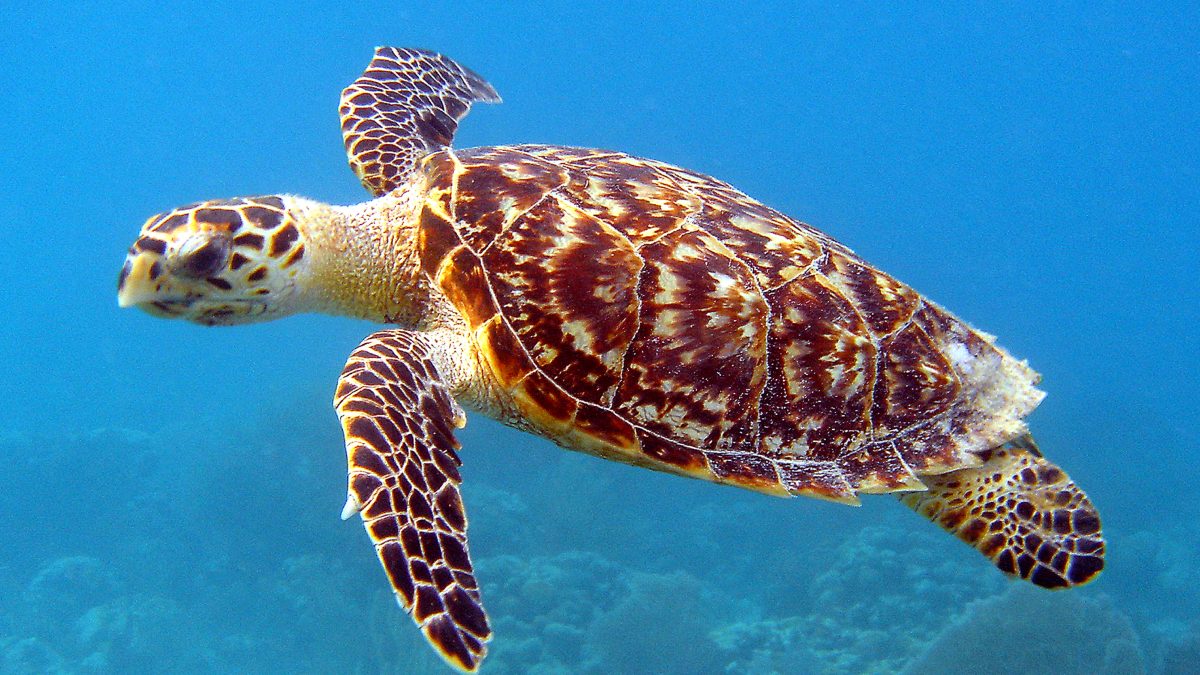
Photo Credit : Caroline S. Rogers USFWS Southeast
The hawksbill turtle (Eretmochelys imbricata) is an endangered type of turtle that belongs to the Cheloniidae family. This species has a worldwide spread with two subspecies found in the Atlantic and Pacific Oceans.
Physical Characteristic
Named for their hawk-like beak, hawksbills turtles use this unique feature to access food sources in hard-to-reach cracks and crevices. These turtles generally have a flat body, a protective carapace, and fin-like limbs adapted for open ocean swimming. Hawksbill turtles can grow up to 114 cm in length and weigh between 46 and 70 kg.
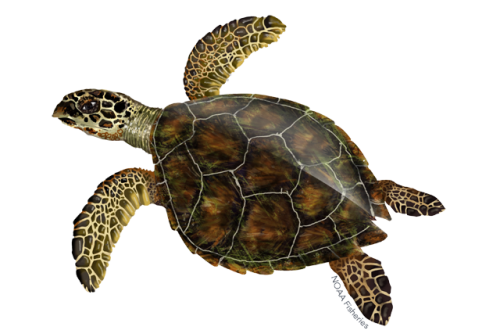
Photo Credit : NOAA Fisheries
Behaviour
Hawksbill turtles, like other sea turtle, travel long distance between feeding grounds and nesting beaches. Female hawksbill turtles return to the same nesting ground where they were born to lay their eggs, nesting every 2 to 4 years. Their nesting period is between 3 to 6 times per season, laying an average of 160 eggs per nest.
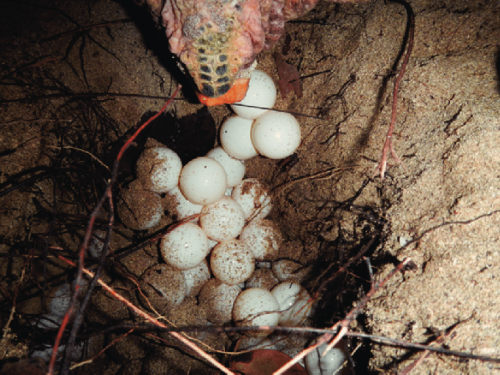
Photo Credit : Nathan J. Robinson
Diet
While hawksbill turtles are omnivorous (feeding on both plants and other animals), they often favour sea sponges in many regions. They also consume marine algae, corals, molluscs, tunicates, crustaceans, sea urchins, small fish, and jellyfish. Their beak shape allows them to reach food in small reef crevices.

Photo Credit : Jayne Jenkins/Coral Reef Image Bank
Habitat
Hawksbill turtles inhabit various habitats at different life stages, but they primarily reside in nearshore foraging area, particularly healthy coral reef habitats. After hatching, most hawksbill leaving beaches to enter pelagic (open sea) habitat, taking shelter in floating algal mats and drift lines for approximately 1 to 5 years. As they mature, they migrate to shallower coastal feeding grounds, including coral reefs.
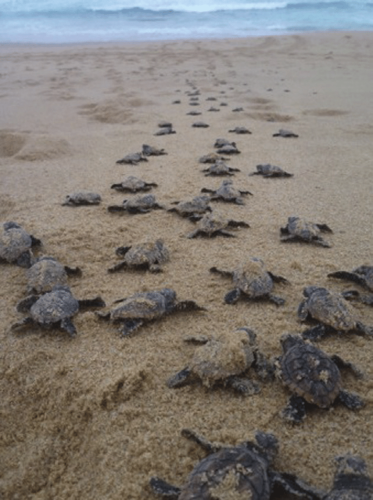
Photo Credit : Nathan J. Robinson
In many parts of the world, hawksbills are hunted for their attractive shell, also known as tortoise shells, which often used in jewellery and trinkets crafting. The historical hunting and killing of hawksbills for their shells nearly drove the species to extinction. Today, the Convention on International Trade of Endangered Species (CITES) prohibit the trade of any turtle products on the international market, including hawksbill tortoise shells; however, illegal hunting continues to represent a threat to the species in many parts of the world.
Lifespan
Hawksbill are estimated to reach maturity at around 20 to 35 years, depending on various factors, including resource availability. Although life expectancy remains unconfirmed, they are long-lived and estimated to live 50 to 60 years.
Threats
- Unintentional Capture in Fishing Equipment
A primary threat to sea turtles is their unintentional capture in fishing gear, leading to injuries that can cause death or severe debilitation, such as swallowing hooks or flipper entanglement. This unintentional capture, known as bycatch, is a global issue. The primary types of equipment that result hawksbill turtles bycatch include gillnets and hook, and line fisheries operating in coastal habitats.
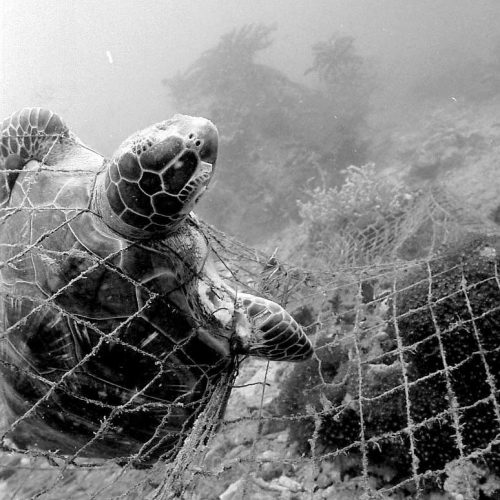
Photo Credit : Leong Yow Chee
- Intentional Harvesting of Turtles and Eggs
Despite their protection under various national and international frameworks, the intentional killing of hawksbills for the wildlife trade and the harvesting of their eggs, meat, and shells is still continue. Hawksbill shells are often collected and carved into hair clips, combs, jewellery, and other trinkets, while whole turtles are often harvested and stuffed for sale in the illegal wildlife trade. Hawksbill eggs are often consumed by coastal community, or sold in nearby urban centres. Hawksbill meat is still a food source in many countries.

Photo Credit : Coastal Care
- Loss and Degradation of Nesting and Foraging Habitat
The loss of nesting habitat and coral reefs due to coastal development, climate change induced sea level rise, and pollution, pose significant threats to hawksbill turtles. Coastal development, including shoreline hardening, can lead to the total loss of dry sand suitable for successful nesting. Rising sea levels and more intense storms contribute to the erosion of nesting beach habitat. Artificial lighting on and near nesting beaches can deter females from nesting and disorient hatchlings trying to reach the sea after emerging from their nests.
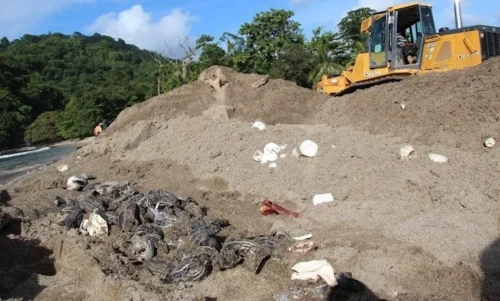
Photo Credit : Marc De Verteuil/Papa Bois Conservation
- Predation of Eggs and Hatchlings
The destruction and consumption of eggs and hatchlings by both non-native and native predators (especially rats, raccoons, mongooses, crabs, feral cats, and dogs) pose a significant threat to sea turtles around the world.
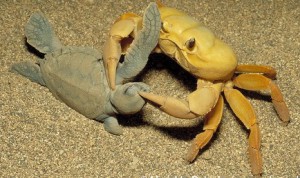
Photo Credit : Sea Turtle Camp
- Ocean Pollution
Increasing pollution of nearshore and offshore marine habitats threatens all sea turtles and degrades their habitats. Hawksbill turtles may ingest marine debris such as fishing lines, plastic bags, floating oil, and other materials discarded by humans, mistaking them for food.
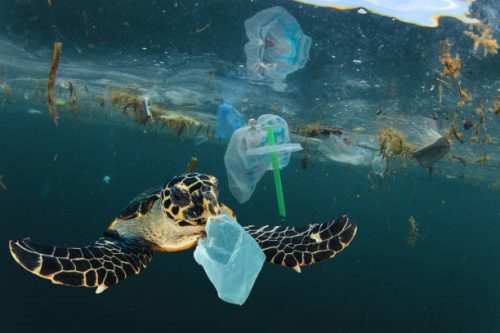
Photo Credit : Richcarey/iStock
- Climate Change
For sea turtles, a warming climate could lead to changes in beach morphology and higher sand temperature, which can be lethal to eggs or alter the ratio of hatchlings. Changes in the marine environment temperature could alter the abundance and distribution of food resources, leading to a shift in the migratory and foraging range and nesting season of hawksbills.
Conservation and Management (Indonesia)
All sea-turtle species in Indonesia are protected under Government Regulation (PP) No 7/1999, concerning the Preservation of Plant and Animal Species. This means that all forms of trade in sea turtles both alive and dead, and body parts are prohibited by the government. According to Law No. 5 of 1990 concerning the Conservation of Biological Natural Resources and their Ecosystems, and the provisions of CITES (Convention on International Trade in Endangered Species of Wild Flora and Fauna), all sea turtle species are included in Appendix I, meaning that international trade in sea turtles for commercial purposes is also prohibited. The World Conservation Agency IUCN lists hawksbill turtles as critically endangered. The Ministry of Marine Affairs and Fisheries to regulate the use of sea turtles and their derivatives also issued Circular Letter No. SE 526 of 2015 concerning the Implementation of Protection of Sea Turtles, Eggs, Body Parts, and/or Derivative Products to regulate the use of sea turtle and their derivatives.
Scientific Classification
|
Kingdom: |
Animalia |
|
Phylum: |
Chordata |
|
Class: |
Reptilia |
|
Ordo: |
Testudines |
|
Family: |
Cheloniidae |
|
Genus: |
Eretmochelys |
|
Species: |
imbricata |

